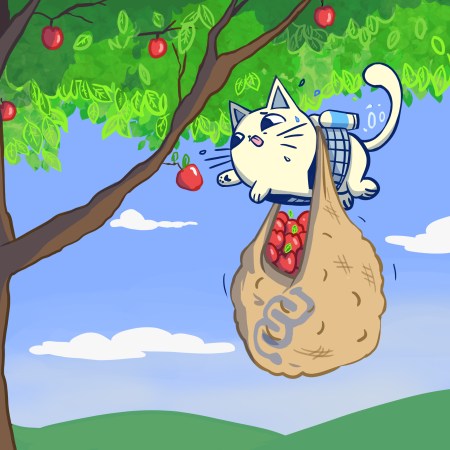Fall Brawl: Pumpkin Carving vs Apple Picking

It’s getting cooler, and the leaves are brighting up the landscape with their brilliant hues. Autumn has arrived, and it’s time for some seasonal activities!
If you’re a big Halloween buff you know it’s time to carve some spooky faces into some nice fall pumpkins. Or maybe you’re more of a leaf peeper, and want to experience the daytime fall landscape on your way up to family-run apple orchard. Then apple picking is the activity for you!
Let’s get to know a little more about our favorite October festivities before they face off on the Eyewire battlefield!
Pumpkin Carving
The carving of Jack-‘o-lanterns on Halloween is a tradition taken from the Irish myth of “Stingy Jack”. As the legend goes, Jack came across the devil one day and asked to share a drink with him at the local pub. After they had finished drinking, Jack had no money to settle the tab and suggested the devil turn into a coin so he could pay. After the devil obliged him, he instead put the coin into his pocket, which also contained a silver cross. The devil could not escape, so Jack made a deal with him that he would not continue to bother Jack, and that he would not send Jack to hell when he died. The devil agreed and Jack freed him.
When Jack died the devil stood by his word to not take Jack down into hell but he was not allowed into heaven either. Instead, Jack was doomed to wander through the darkness for all eternity. To light his way he took a single ember and placed it in a hollowed out turnip.
From this legend came the jack-o’-lantern, which people in the Irish Gaelic community would carve from turnips, and set out in hopes of keeping spirits away from their homes during the Celtic festival of Samhain. During this time the spirits of the underworld were said to gain access to the world of the living.
When Irish people began immigrating to the United States they continued this tradition, but used pumpkins instead of turnips, which were more readily available in their new home.

Apple Picking
Apple picking has existed as a leisure activity in the US for over 100 years!
Early US settlers mainly used apples to make cider. They were bitter and definitely not something to give to your teacher, but they were great once fermented!
However, farmers experimented with tree grafting, and new, more appetizing apples began to emerge. The earliest of these cultivated apples was thought to be the Roxbury Russett, a greenish brown apple that is still around today!
During the 1800s the apple industry began to blossom, and by the early 1900s there were 14,000 varieties of apples! Apple mania! Apples came in a wide variety of shapes, sizes and colors, and were used for baking, drying, eating, livestock feed, and of course, still for making delicious apple cider.
The Board of Agriculture saw an opportunity to market farm visits as mini-vacation destinations for city dwellers. Agritourism brought in a healthy amount of revenue for farming communities. One farm brought patreons from Boston on a self desribed “Apple Train” so they could pick their own apples. New Hampshire saw 6.6 million in agritourism dollars in 1899 alone!
The tradition of city slickers visiting farms to pick their own apples continues to this day. There are still 25,000 agritourism sites, with over a billion dollars worth of products being sold. An apple you’ve plucked straight off the tree certainly tastes sweeter, don’t you think?
So which will it be, a little Halloween mischief, or some wholesome family fun and tasty tree snacks! The choice is yours, so pick your team, pick your favorite fall flannel, and let the battle begin! The fun starts at 11 AM EDT on 10/4 and goes for 48 hours!
Bonuses:
- Starting Lineup – top 3 players on each team, who earn 75% of their score in bonus points
- All Other Players – earn 50% of their score in bonus points
- Winning Team – 20,000 additional points
- Each Team’s MVP – 5,000 additional points
The winning team is determined by average points per player, with 2x weight given to Starting Lineup players. To qualify for any of the above bonuses or affect the team score, players must earn a minimum baseline of 2,000 points.
Artwork by Daniela Gamba
